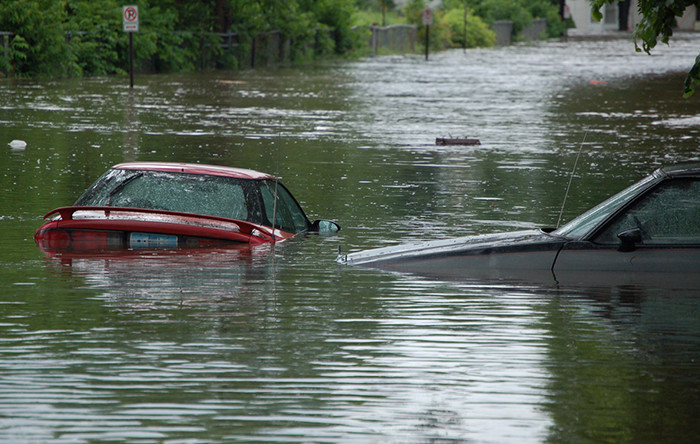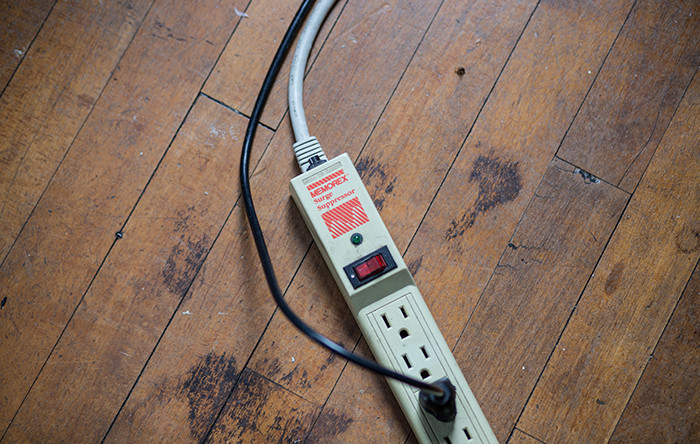From hurricanes and tornados to savage lightning and snowstorms, there is plenty of bad weather out there that can wreak havoc on your home and family. Being prepared with these storm survival tips can protect you as summer draws to an end and potentially dangerous weather approaches.
Every parent should be equipped with storm knowledge and storm survival tips, so you and your family will be ready, should disaster strike. Follow these storm survival tips before a storm hits, and when bad weather strikes.
Looking for more safety tips as the back-to-school season gets underway? Read these five back to school safety lessons you should teach your kid.
- Conserve battery power with LEDs
Battery-powered flashlights or camping lanterns can run out 6 to 10 times sooner than LED versions. Add a few LED flashlights to your collection, or upgrade your emergency lighting entirely.
- Make your flashlights or lanterns glow-in-the-dark
Put glow-in-the-dark tape around your flashlights and lanterns so you’ll be able to find them when the power goes out. It’s also a good idea to keep a few glow sticks on hand. That way, when the power goes out, you’ll have not just a light source, but a source of entertainment for the kids.
- Know the lightning hazards in your home
Just because you’re in your house doesn’t mean you’re safe from lightning, which can travel through water, plumbing, and wiring. Don’t use appliances, take a shower, or talk on a corded phone during a storm.
- Beware of shocking flooded basements
If you open your basement door after a storm and see the unwelcome sight of water in your basement, stop in your tracks. The water could be electrified, and you don’t want to find out the hard way. Have the power company turn off the power before you venture down the stairs.

- Turn off the gas
As with the electricity, it’s a good idea to have the gas company turn off your gas if you have a flooded basement. Even if you don’t smell a gas leak, one could be present. If you do smell gas, leave the house immediately.
- Gear up to clean up your flooded basement
Once your gas and electricity are off, it’s likely safe to enter your flooded basement to assess the damage or begin cleaning up. But you’ll want to suit up safely, in rubber boots and gloves. The water in a flooded basement can be polluted by sewage, or chemicals, cleaners, paints, etc., that you store in the cellar.
- Install a water-powered backup sump pump
Of course, you may be able to avoid a flooded basement entirely by installing a sump pump, and a water-powered backup sump pump.
- Don’t drive across flooded roads
What may look like just a few inches of water in the roadway that your car or SUV could power through could actually be a real danger. Cars can get swept away by floodwaters just two feet deep. If you encounter a flooded road, turn back, and head for higher ground.

- Don’t cross floodwaters on foot
Just as crossing floodwaters in your car can be dangerous, so can crossing on foot. You can get swept away by just six inches of rushing water, and unseen drop offs in the water can put you in over your head.
- Never run a generator indoors
If your power goes out and you have a backup generator, always haul it outside before using it—no matter the weather. Generators exhaust carbon monoxide gas, which is odorless and deadly.
- Install carbon monoxide detectors
While we’re on the topic of carbon monoxide, make sure you have battery-powered CO2 detectors installed in your home. Whether you’re running a woodstove you rarely use, or using an alternative heat or power source, you’ll know you can do so worry-free.
Also make sure your smoke detectors are working. Want to know more about fire alarm safety? Read these seven lifesaving smoke alarm safety tips every parent should know.
- DIY generator
You can make your car into a generator by using a power inverter to turn DC current from your car into AC current. There are inverters to run a laptop or tablet, starting at $25, or go for bigger models to run appliances or power tools.
- Use surge protectors
Lightning can cause power surges that can destroy computers. Make sure your computers and electronic devices are plugged in to surge protectors that can absorb at least 100 joules of energy. It’s also a good idea to have your precious family photos and anything else irreplaceable stored on your computer backed up to the cloud or elsewhere.

- Hoard some cash
If you’re one of those people who usually relies on plastic to make your purchases, you’ll want a few greenbacks tucked away for an emergency. You won’t be able to use credit cards at a store during a blackout, so keep an emergency stash of cash somewhere in your house.
- Do more than just fill the tub
You might have heard of filling the bathtub with water when there’s a hurricane warning or you suspect a power outage due to a storm. Take that tip one step further by storing water in a low-density plastic container built to fit inside your tub. Fill the container with water from the tub’s faucet, then access it when needed through a spigot on top of the container.
- Fill the tank
Whether it’s barbecue season or not, having a full tank of propane to power your gas grill can be wise. That way, you’ll be able to fire up the barbie and grill some food. The same goes for keeping charcoal on hand for charcoal grills.
- Flush the toilet using a bucket of water
If a power outage knocks out the city water supply or your well pump, you’ll still want the ability to flush the toilet. Do so by using a bucket to dump a few gallons of water into the toilet tank.
- Make ice in advance
Fill gallon plastic bags with water and keep them in your freezer. When the power goes out, they’ll help your freezer stay cooler longer. Or, you can remove them and use them in a cooler during a blackout. Then, drink the water once the ice has melted.
- Keep spare gas
It’s a good idea to keep a five-gallon container or two of spare gas on hand in case of a bad storm. If gas stations don’t have power, you won’t be stuck on empty. And, you’ll be able to use your car as a source of heat or power if needed.
- Get a radio
These days, the Internet and Smartphones offer an easy alternative to a real, live radio. But in an emergency, a battery-powered radio can keep you connected to storm and emergency alerts. They cost about $20, and can be well worth the money spent during a storm.


